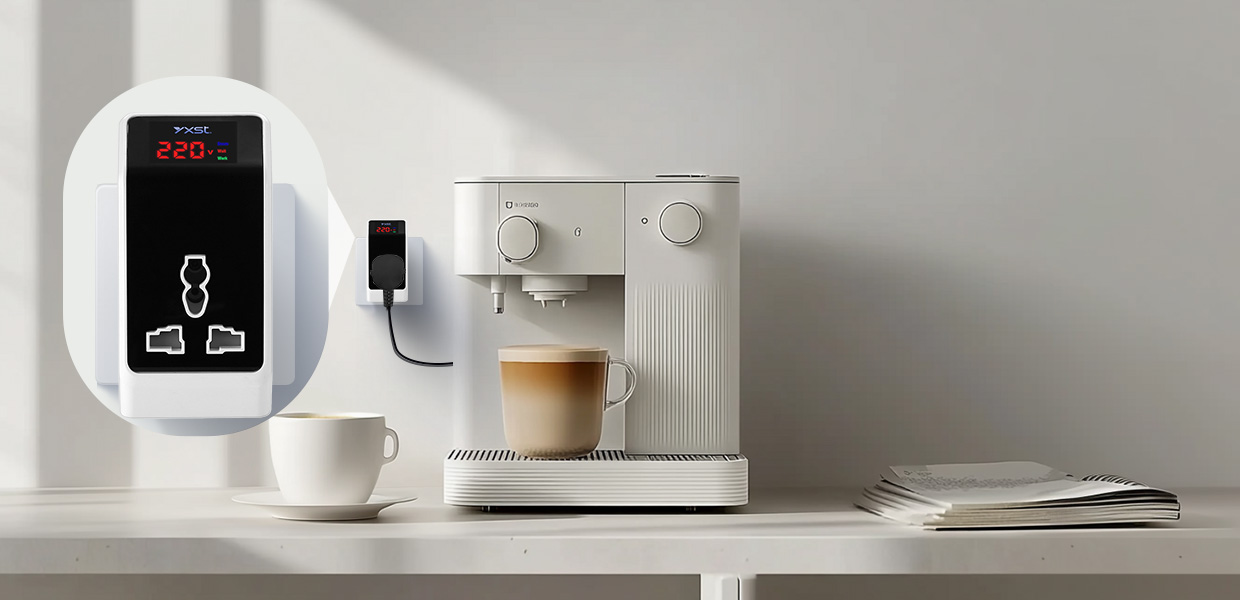Home Voltage Protector: Essential Guardian for Electrical Safety
Date:2025-04-17 Click:724
Understanding Voltage Fluctuations
What Causes Voltage Fluctuations?
Voltage fluctuations occur due to various reasons, including:
- Power grid instability – Variations in electricity supply from the main grid.
- Lightning strikes – Sudden surges caused by natural phenomena.
- Faulty wiring – Poor electrical connections leading to irregular current flow.
- High-power appliances – Devices like air conditioners or refrigerators causing sudden power draws.
Risks of Unstable Voltage
Uncontrolled voltage changes can lead to:
- Appliance damage – Reduced lifespan or complete failure.
- Fire hazards – Overheating of wires and circuits.
- Safety concerns – Risk of electric shocks or short circuits.
How a Home Voltage Protector Works
Home voltage protector continuously monitors the incoming voltage and takes corrective actions when necessary.
Key Components
1. Voltage Sensor – Detects fluctuations in real-time.
2. Control Circuit – Processes the sensor data and triggers protective measures.
3. Relay/Switching Mechanism – Disconnects or regulates power supply when needed.
4. Delay Timer – Prevents frequent switching during minor fluctuations.
Protection Mechanisms
- Overvoltage Protection – Cuts off power if voltage exceeds safe limits.
- Undervoltage Protection – Prevents damage from low voltage conditions.
- Surge Suppression – Blocks sudden high-voltage spikes.
Types of Home Voltage Protectors
Different models cater to varying needs. Some common types include:
1. Basic Voltage Stabilizers
- Adjusts minor fluctuations automatically.
- Suitable for low-power appliances.
2. Advanced Surge Protectors
- Provides instant response to high-voltage surges.
- Often includes additional features like EMI filtering.
Benefits of Using a Home Voltage Protector
1. Enhanced Appliance Longevity
By maintaining stable voltage, protectors prevent wear and tear on sensitive electronics.
2. Improved Safety
Reduces risks of electrical fires and short circuits.
3. Energy Efficiency
Optimizes power consumption, leading to potential savings.
Choosing the Right Home Voltage Protector
Factors to Consider
- Load Capacity – Must match the total wattage of connected appliances.
- Response Time – Faster response ensures better protection.
- Installation Type – Can be plug-in or hardwired.
- Additional Features – Look for indicators, alarms, or auto-recovery functions.
Installation Tips
- Place the protector close to the main power source.
- Avoid overloading the device beyond its rated capacity.
- Consult a professional for whole-house systems.
Maintenance and Troubleshooting
Regular Checks
- Inspect for physical damage or burnt components.
- Test the protector periodically with a voltage tester.
Common Issues & Solutions
- Frequent Tripping – Could indicate severe fluctuations; consider upgrading the protector.
- No Power Output – Check connections and reset if necessary.
Conclusion
A home voltage protector is an indispensable device for safeguarding electrical appliances and ensuring household safety. By understanding its functions and selecting the right model, users can enjoy stable power supply and prolonged appliance life. Investing in a reliable voltage protector is a smart decision for long-term electrical security.


